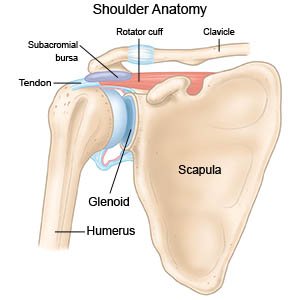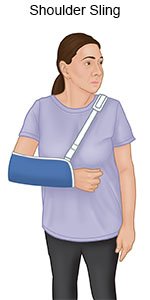Arthroscopic Acromioplasty
Medically reviewed by Drugs.com. Last updated on Aug 4, 2025.
Arthroscopic acromioplasty is a procedure used to smooth out a part of your scapula (shoulder blade) called the acromion. Your healthcare provider will insert a scope to see inside your shoulder. A scope is a small, bendable tube with a camera on the end.
 |
WHILE YOU ARE HERE:
Before your procedure:
- Informed consent is a legal document that explains the tests, treatments, or procedures that you may need. Informed consent means you understand what will be done and can make decisions about what you want. You give your permission when you sign the consent form. You can have someone sign this form for you if you are not able to sign it. You have the right to understand your medical care in words you know. Before you sign the consent form, understand the risks and benefits of what will be done. Make sure all your questions are answered.
- An IV is a small tube placed in your vein that is used to give you medicine or liquids.
- Anesthesia is medicine to make you comfortable during the procedure. Healthcare providers will work with you to decide which anesthesia is best for you.
- General anesthesia will keep you asleep and free from pain during the procedure. Anesthesia may be given through your IV. You may instead breathe it in through a mask or a tube placed down your throat. The tube may cause you to have a sore throat when you wake up.
- An interscalene block will numb your shoulder and arm. The medicine is given as a shot in your neck. You will be awake during the procedure. You may also be given other medicine to make you relaxed and sleepy. You may still feel pressure or pushing during the procedure.
During your procedure:
A small incision will be made in your shoulder. Your surgeon will insert a scope through the incision. He or she may make more small incisions to insert other surgical tools. Your surgeon will shave down the parts of your bone that are pressing on your tendons. He or she may remove swollen or damaged tissue in your shoulder. He or she may need to fix a tear in your rotator cuff. Your incisions will be closed with stitches or medical glue.
After your procedure:
You will be taken to a room to rest until you are fully awake. Healthcare providers will monitor you closely for any problems. Do not get out of bed until your healthcare provider says it is okay. When your healthcare provider sees that you are okay, you may be able to go home.
- You may need to wear a sling to keep your arm from moving. A small pillow attached to the sling will hold your arm slightly away from your body. This position decreases pressure and pain, and helps your shoulder heal.

- Healthcare providers will put ice on your shoulder to prevent tissue damage and decrease swelling and pain.
- Medicines may be given to decrease pain or help prevent infection caused by bacteria.
RISKS:
Your surgeon may need to make a larger incision during the procedure. You may bleed more than expected, bruise, or develop an infection. You may have stiffness or trouble moving your arm and shoulder. You may have numbness and tingling in your arm. After the procedure, you may still have weakness and pain. Your tendon may tear again, and you may need another procedure.
CARE AGREEMENT:
You have the right to help plan your care. Learn about your health condition and how it may be treated. Discuss treatment options with your healthcare providers to decide what care you want to receive. You always have the right to refuse treatment.© Copyright Merative 2025 Information is for End User's use only and may not be sold, redistributed or otherwise used for commercial purposes.
The above information is an educational aid only. It is not intended as medical advice for individual conditions or treatments. Talk to your doctor, nurse or pharmacist before following any medical regimen to see if it is safe and effective for you.
Further information
Always consult your healthcare provider to ensure the information displayed on this page applies to your personal circumstances.
